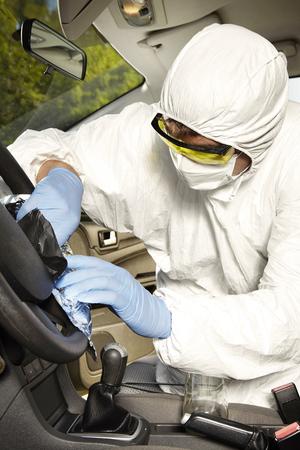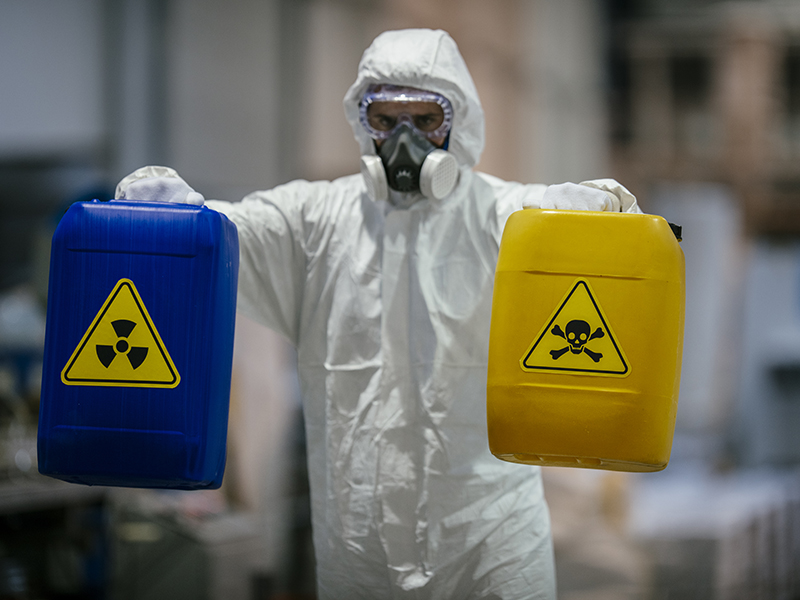Mold Remediation Providers: Safeguarding Your Property from Mold And Mildew Damage
Mold Remediation Providers: Safeguarding Your Property from Mold And Mildew Damage
Blog Article
Specialist Biohazard Cleansing and Purification for Blood, Bodily Fluids, and Hazardous Products
The potential wellness threats associated with exposure to biohazards emphasize the essential requirement for careful handling and comprehensive clean-up. As we browse the elaborate landscape of biohazard cleanup, comprehending the subtleties of regulations, compliance, and the customized devices at play comes to be critical in ensuring a risk-free and thorough purification process.
Health Threats of Biohazard Direct Exposure
Exposure to biohazards positions substantial health and wellness risks that can cause extreme consequences for people and areas alike. Biohazards include a wide variety of organic materials, including blood, physical liquids, mold, bacteria, viruses, and other possibly contagious products. When individuals enter contact with these biohazards, whether with crashes, inappropriate handling, or environmental direct exposure, they deal with the danger of having severe diseases or illness.
Among the key wellness threats connected with biohazard exposure is the transmission of contagious diseases. Bloodborne virus such as HIV, liver disease B and C, and various microorganisms can be present in biohazardous materials, posing a straight risk to human wellness. Inhaling airborne biohazards like mold and mildew spores or entering contact with infected surface areas can additionally cause respiratory system issues, allergic reactions, and various other negative health results.
Furthermore, biohazard direct exposure can have lasting health effects, with some diseases manifesting years after the initial call (Blood Cleanup). As a result, it is critical to prioritize appropriate biohazard cleaning and purification to reduce these health risks and ensure the safety and security of communities and individuals

Specialized Training for Biohazard Clean-up
When it comes to managing biohazard cleaning efficiently and safely, specialized training plays a basic function in ensuring proper decontamination treatments are complied with. Biohazard cleanup calls for details expertise and abilities to efficiently alleviate threats connected with bloodborne pathogens, bodily fluids, and unsafe products. Specialists trained in biohazard cleaning go through rigorous direction on how to safely manage, get rid of, and throw away biohazardous materials to avoid contamination and exposure.
Specialized training for biohazard cleanup covers a variety of essential topics, consisting of proper individual protective equipment (PPE) use, bloodborne pathogen awareness, purification strategies, and unsafe waste disposal protocols. People learnt biohazard clean-up are geared up with the needed competence to examine contamination levels, determine potential hazards, and carry out appropriate cleaning procedures in conformity with regulative standards.
Constant training and education and learning are critical in the field of biohazard clean-up to remain updated on the current decontamination innovations, safety procedures, and guidelines. By buying specialized training, biohazard cleanup professionals can properly react to emergency clean-up situations and protect both public health and wellness and the setting.
Importance of Appropriate Decontamination Strategies
Making use of appropriate purification techniques is crucial in biohazard cleanup to successfully get rid of unsafe products and minimize wellness risks. Efficient decontamination not just ensures the elimination of noticeable traces of blood, bodily liquids, and other biohazards but likewise targets undetectable virus that may pose significant health and wellness hazards otherwise correctly eradicated. By complying with strict decontamination methods, trained experts can substantially minimize the threat of direct exposure to harmful microbes, infections, and bacteria that might bring about infections or diseases.
Proper purification techniques include making use of specific devices and disinfectants that are specifically made to counteract biohazards effectively. Complete cleansing and disinfection of infected locations are necessary to protect against the spread of pathogens and ensure a secure atmosphere for passengers. In addition, the proper disposal of biohazardous waste following purification procedures is important in stopping contamination of various other surfaces or people.

Devices and Devices for Safe Clean-up
The appropriate devices and tools play a vital function in making certain the reliable and secure cleanup of biohazardous products. When dealing with blood, physical fluids, or unsafe materials, biohazard cleaning specialists rely upon specialized equipment to minimize direct exposure dangers and extensively decontaminate the affected location. Individual safety equipment (PPE) such as gloves, masks, coveralls, and safety glasses are important to protect against direct contact with possibly transmittable products. Furthermore, biohazard cleansing packages containing anti-bacterials, absorbent products, and biohazard bags are made use of to safely dispose and consist of of infected things. Blood Cleanup.
Advanced cleansing devices like hospital-grade anti-bacterials, HEPA-filtered vacuums, and fogging machines are employed to disinfect surfaces and get rid of biohazards successfully. Specialized equipment such as sharps containers and biohazard waste disposal bins are used to securely take care of sharp items and biohazardous waste products. By making use of read the best equipment and tools, biohazard cleaning professionals can make certain a comprehensive cleanup procedure that prioritizes safety and lessens health risks for both employees and residents of the damaged space.
Laws and Compliance in Biohazard Cleaning
Proper adherence to regulations and compliance requirements is extremely important in biohazard cleansing to guarantee the safety and security of both employees and the setting. Federal government firms such as OSHA (Occupational Security and Health And Wellness Administration) and the EPA (Environmental Defense Agency) have established details standards for biohazard clean-up treatments to lessen health and wellness risks and ecological contamination. These regulations cover a range of elements including the handling, transport, and disposal of biohazardous materials, as well as the essential training and protective tools required for employees included in the cleaning process.
Biohazard cleaning companies need to remain updated with these guidelines to assure that their operations fulfill the called for security standards. Failing to adhere to these policies can result in severe effects, including fines, lawsuit, and threatening the health of people and the atmosphere. By following rigorous policies and compliance steps, biohazard cleaning Full Article firms can properly mitigate dangers and guarantee a thorough and safe clean-up process for all celebrations entailed.
Conclusion
In verdict, biohazard cleansing and decontamination call for specific training, correct methods, and adherence to policies. Direct exposure to blood, bodily fluids, and dangerous materials poses substantial health risks, making it crucial to make use of the appropriate devices and tools for safe cleanup. By adhering to strict procedures and standards, experts can effectively mitigate the risks related to biohazard exposure and make certain the safety of both themselves and others.
As we browse the elaborate landscape of biohazard cleanup, comprehending the nuances of laws, compliance, and the specific devices at play ends up being vital in making sure a safe and detailed purification process. (Blood Cleanup)
When it comes to handling biohazard cleaning successfully and safely, specialized training plays an essential function in guaranteeing discover this info here correct purification treatments are adhered to.Utilizing appropriate decontamination techniques is crucial in biohazard cleaning to successfully reduce and remove dangerous materials wellness risks. In addition, biohazard cleaning sets consisting of anti-bacterials, absorbing products, and biohazard bags are used to safely dispose and consist of of infected items.
Government firms such as OSHA (Occupational Security and Health And Wellness Administration) and the EPA (Environmental Protection Firm) have actually established specific standards for biohazard cleaning procedures to minimize health dangers and environmental contamination.
Report this page